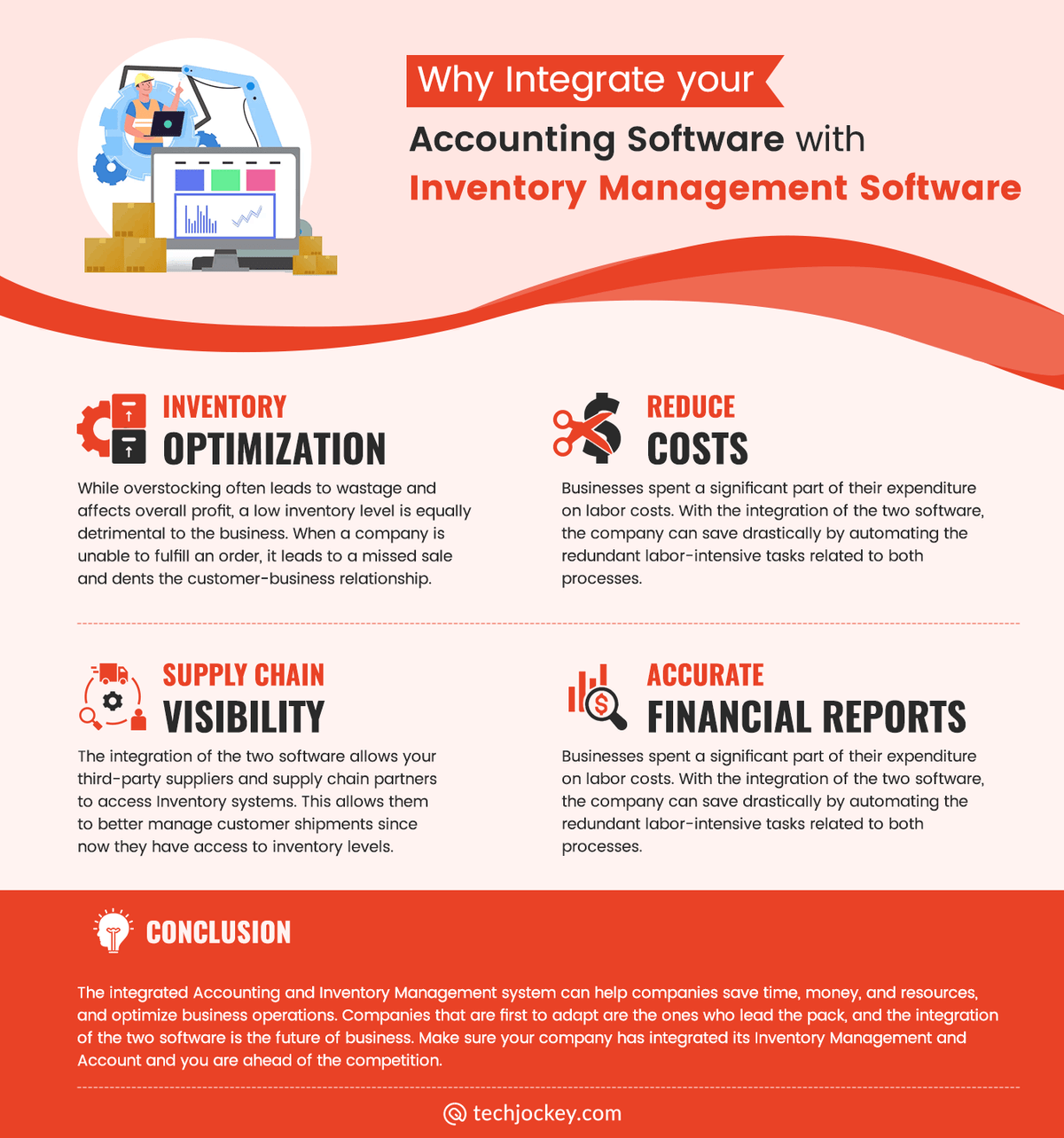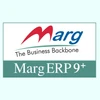What Is Inventory Accounting & Why Integrate Accounting Software with Inventory Software

Summary: Industry-leading companies ensure their various business functions interact with each other for smooth functioning. Having standalone inventory management and accounting systems is not enough. Businesses need to make sure the two functions are integrated to ensure they can optimize their inventory, reduce costs, and reap all the benefits of the integration.
Accounting software and inventory management software are essential for every firm to increase productivity and optimize different operations. While inventory management software is intended to keep inventory levels in check, accounting software defines your company’s financial status.
Inventory software provides visibility into what is there in your warehouse and where your product is stored. This software, however, cannot guarantee that the inventory asset value on your financial reports corresponds to what is in stock. Only with the integration of inventory software and accounting software, this process should be automated without requiring manual intervention and reconciliation.
Online inventory management software and accounting software are two of the most important systems that can be integrated. A business can efficiently streamline the information flow by integrating accounting software and inventory management software. Businesses can further benefit from accurate forecasting and data reconciliation.
As we talk about the integration of accounting software and inventory software, the discussion around inventory accounting becomes critical.
What Is Inventory Accounting?
Inventory accounting is an area of accounting concerned with valuing and recording changes to inventoried assets. A company’s inventory can be represented in roughly three production stages — raw materials, works-in-progress, and finished products that are available for sale. Inventory accounting assigns value to all the items in these three inventory stages and further records them as the company’s assets.
Inventory items within the three production stages can change value based on where they are currently in the process. An accurate Inventory Accounting keeps track of the change in the value and rightly adjusts the asset value and cost associated with the inventory goods.
How Does Inventory Accounting Work?
Generally accepted accounting principles (GAAP) mandates that companies follow a standard when conducting Inventory Accounting. This is done to ensure that companies don’t overstate the profits by undervaluing their inventory. Profits are calculated by a simple formula — profit=revenue-cost. Revenue is generated by selling the inventory.
If the inventory value is low, the profit associated with the product would be high. This would lead to the company assuming profits more than what it made. Inventory Accounting also stops companies from inflating their value by overvaluing their assets. Inventory is an asset and overvalued inventory would mean the company is showing an inflated asset value.
The following steps are frequently included in the inventory accounting process:
- Creating an inventory monitoring system
- Ensuring physical inventory controls
- Purchasing and receiving products for resale
- Recording sales transactions
- Conducting a thorough inspection of physical inventory to corroborate the numbers
- Updating the general ledger inventory balance.
Benefits of Inventory Accounting
Inventory accounting has become a common practice for businesses all over the globe. Accurate data obtained from inventory accounting clearly represent the company’s current financial situation. However, this is not the only perk of Inventory Accounting as companies can greatly benefit from this practice.
This can help businesses identify the areas where they can reduce costs and increase profit margins. This is evident from the manufacturing businesses which require a lot of time and money – majorly in technology, pharmaceuticals, and machinery. Companies can assess the value of products across the various stages to identify the stage where the company can reduce costs while keeping the value same. Moreover, the integration of accounting software and inventory software is a crucial aspect of inventory accounting.
Why Integrate your Accounting Software with Inventory Management Software?

Businesses out there already have an inventory management system and accounting software in place. Even though these two systems have a lot of information worth exchanging, usually they aren’t configured to communicate with each other.
Effective inventory management requires interaction with different areas of the business. Although inventory management software can monitor physical inventory stock, it doesn’t work perfectly in isolation. For the best possible optimization, it must be integrated with other business components, especially accounting software.
While the two standalone software bring immense streamlining to the company’s operation, their integration saves the company time, money, and valuable resources. Read more to know the upside of integrating your Accounting Software with Inventory Management Software.
- Inventory Optimization
While overstocking often leads to wastage and affects overall profit, a low inventory level is equally detrimental to the business. When a company is unable to fulfill an order, it leads to a missed sale and dents the customer-business relationship. An accurate report of your inventory helps you make the most of sales opportunities. This is much more helpful than relying on manual data to gauge the inventory.
With the integration of inventory and accounting software, you can ensure accurate data analysis. The integration also provides sales forecasts and valuable insights into the cash flow. As a result, you can plan the appropriate stock levels and meet customers’ demands through inventory optimisation tools.
- Reduce Costs
Businesses spent a significant part of their expenditure on labor costs. With the integration of the two software, the company can save drastically by automating the redundant labor-intensive tasks related to both processes.
- Supply Chain Visibility
The integration of the two software allows your third-party suppliers and supply chain partners to access Inventory systems. This allows them to better manage customer shipments since now they have access to inventory levels.
Providing this visibility has a functional purpose in addition to its symbolic one, which is to demonstrate your trust in your providers with sensitive data. By integrating the inventory and accounting software, supply chain partners will be able to monitor your fluctuating inventory levels and take proactive measures to make sure you have enough to meet client demand.
- Accurate Financial Reports
Businesses need to corroborate their inventory stock with accounting data to avoid any discrepancies. This accuracy is vital not only for their financial statements and taxation purposes but also because stakeholders and investors demand accurate financial data.
Any discrepancy needs to be investigated and removed from the financial report. This is where the integration of Inventory Management and Accounting Software plays a big role. With two separate business systems – Inventory Management & Accounting, companies would have to manually corroborate Inventory data with the accounting data.
However, with integration, the process can be automated. It mitigates any complications, delays, and mistakes. Successful businesses bank on regular financial reports to identify their strong suits and gaps.
This becomes a monumental task if the team has to compare two different reports to ensure accuracy. However, with an integrated business system, this herculean task becomes quite easy. Teams can effectively collaborate and communicate with each other.
Suggested Read: Understanding the Role of Software in Inventory Management
Conclusion
The integrated Accounting and Inventory Management system can help companies save time, money, and resources, and optimize business operations. Companies that are first to adapt are the ones who lead the pack, and the integration of the two software is the future of business. Make sure your company has integrated its Inventory Management and Account and you are ahead of the competition.
Related Categories: Inventory Control Software | Expense Management Software
Written by
Ashwini Kumar Singh
An experienced Content Developer with a demonstrated history of working in the computer software industry. Skilled in Writing, Content Marketing, SEO, Blogging, and Content Development, he is adding creativity to tech writing. The skills acquired as a Philosophy graduate help him in addressing the pain points of businesses... Read more





























